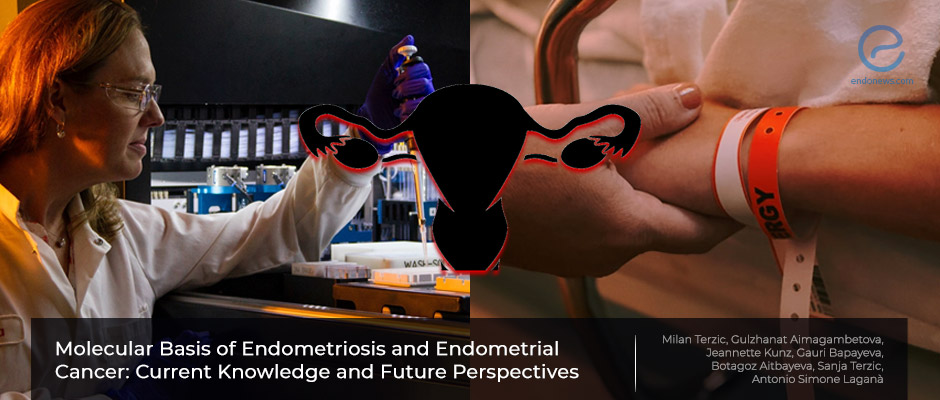Iron and toxic environmental elements in ovarian endometriomas
It is well-known that the growth of endometriotic lesions is estrogen-dependent and supported by inflammatory processes. In addition to oxidative stress, it is believed that several other factors, including chemicals and environmental factors, and genetic predisposition may play a potential…
Key Points Lay SummaryEtiopathogenesis of Endometriosis and Links with Endometrial Cancer
Professor Terzic and colleagues from the Medical School of Nazarbayev University, Kazakhstan published their review on the molecular aspects of endometriosis and endometrial cancer in “International Journal of Molecular Sciences”. The etiopathogenesis of endometriosis has remained controversial, with recent studies…
Key Points Lay SummaryA comprehensive review on the etiopathogenesis of endometriosis
Endometriosis, being a heterogeneous disease has a highly complex etiopathogenesis. A multicenter comprehensive review on this important subject from Italy, Germany, and the USA by Lagana and associates, was recently published in the "International Journal of Molecular Sciences" an open-access journal. Computerized…
Key Points Lay SummaryAdditional research in understanding the causative link between Notch signaling and endometriosis
Dustin M. Brown and associates from the University of Arkansas for Medical Sciences published their unique complex molecular research in the Journal of the Endocrine Society. This study group previously showed that decreased expression of the progesterone receptor (PGR) resulted from…
Key Points Lay SummaryEndometriosis and female pelvic pain in all aspects
Endometriosis is defined as the localization of endometrial glandular and stromal tissue outside the uterine cavity. The prevalence of the disease ranges between 6-10% in reproductive-aged women. However, endometriosis is more frequently encountered in women with chronic pelvic pain and…
Key Points Lay SummaryEndometriosis in a Man as a Rare Source of Abdominal Pain
Endometriosis occurs when a tissue resembling endometrial glands and stroma grows in ectopic sites, commonly causing infertility and pain. Endometriosis has largely been found in women of reproductive age. However, in extremely rare cases, it is also found in men…
Key Points Lay SummaryEndocrine and inflammatory factors in current understanding of endometriosis
There are three forms of endometriosis: peritoneal, ovarian, and deep infiltrating. All three forms consist of endometriotic lesions containing endometrial glands, stroma, nerves, blood vessels, and inflammatory cells. Endometriosis symptoms can be accounted by these elements and the involving organs.…
Key Points Lay Summary
 By Selma Oransay
By Selma Oransay

 By Nasuhi Engin Aydin
By Nasuhi Engin Aydin



 By Hale Goksever Celik
By Hale Goksever Celik

 By Dr. Youngran Park
By Dr. Youngran Park

 By Yu Yu
By Yu Yu